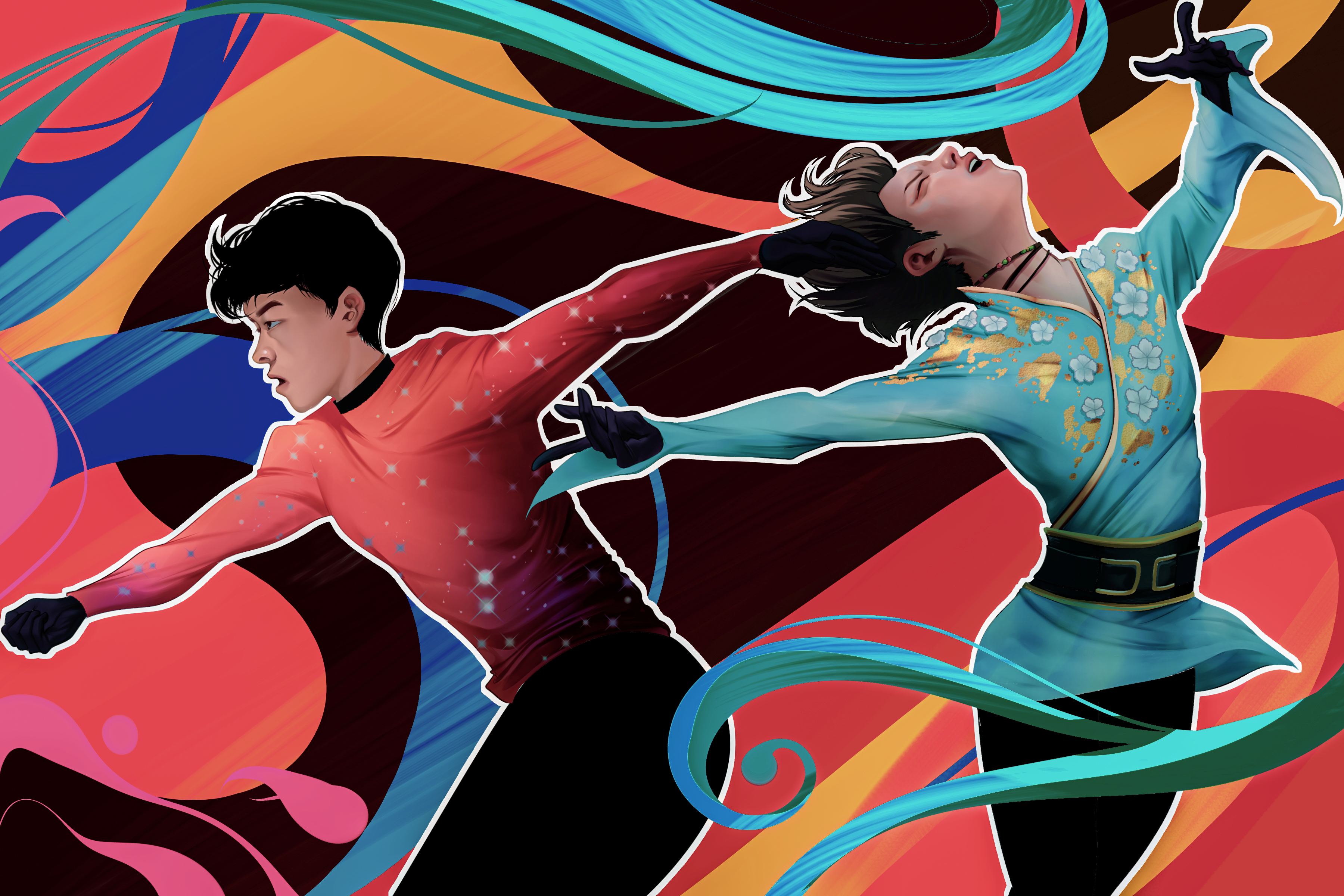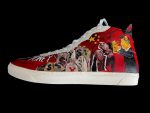Gender has always been a hot topic in the world of ice skating, ever since Madge Syers hit the ice in 1902 and became the first woman to place in a competition in the male-dominated sport. It opened the door for countless female ice skaters to rise to the podium and skate at the same level as their male counterparts, which was still unheard of in many sports at the time. However, this new divide only introduced new toxic standards for male and female athletes alike.
Though the sport requires years of training and physical conditioning, figure skating also prioritizes artistic expression, leaving these two attributes often at odds with each other. Gender roles took hold of this aspect of the skating world immediately and with great impact. For instance, female skaters were expected to look and act a certain way: sparkling costumes, graceful movements and tiny waists.
This introduced the opposite standard for male skaters. Men were supposed to represent the athletic side of skating, incorporating difficult moves in the place of flowery dance segments and artistic interpretations. In a sport that was traditionally a place for athletes to escape the overtly masculine, sweat-fueled world of sports, male athletes were now subject to the standards of strict gender expression.
These standards influence everything that goes into choreographing figure skating routines, down to the clothing athletes can wear. The International Skating Union (commonly referred to as the ISU) has strict rules about what costumes are acceptable in competition. Most of the rules are reasonable, like banning props or accessories that might threaten the safety of skaters on the ice. However, the more one reads into these rules, the more the expectations of traditional gender roles become apparent.
For a long time, women were only allowed to wear skirts, with considerable deliberation from judges regarding how flashy and sophisticated they were. Though these rules have loosened up, men are still banned from wearing tights in competition. Even more systemic, though, is the effect of the ISU’s views on what is “appropriate” for men for wear. Most figure skating competitions are split into two types of scores: technical and component. The technical score is straightforward; it scores each attempted move based on difficulty, then judges them based on how well they were performed. Gender biases come into play when it comes to the component score, which assigns point values to everything, from musical interpretation to the program’s artistic value. There’s not much guidance regarding how judges assign these scores. They are trusted to treat these aspects as objectively as possible, but at the end of the day, they score these parts off instinct.
In a world where sexism is sewn into nearly every aspect of society, it’s no surprise that it would affect judges as well. Consider the point breakdowns for component scores: Feminine skaters tend to get more arbitrary points for performance and composition, while masculine skaters who often take fewer artistic risks still score high in these categories. This can even tie back to stereotypes associated with skaters from certain countries.
The tension between femininity and the skating world reappeared at the 2022 Beijing Winter Olympics as Nathan Chen, an American figure skater and three-time world champion, won the gold medal for Men’s Singles. Chen has always been a judge’s favorite, with his consistently high-difficulty routines and the charismatic style he brings to his skating. Notably, though, he does not appear on the ice in the same way his co-competitors do. His costumes are often more traditionally masculine — with monochrome colors, few embellishments and an overall style that seems focused on making him look like an athlete, rather than a performer. It’s not a negative reflection of his character that he prefers these outfits, of course, but they become more problematic when considering his outlook on his position in the skating world.
Back in 2021, Nathan Chen appeared on a podcast where he expressed his frustrations with people making speculative comments about his sexuality because of his figure skating. Specifically, he made a poorly received comment that he felt pressured “as a straight male athlete in a fairly homosexual-dominated sport, or LGBTQ-dominated sport.” Chen’s words quickly became controversial, resulting in his apology and the podcast episode’s removal, though he was making valid commentary about the judgmental attitude that society has toward male figure skaters no matter how they express their gender.
When asked if people belittle him for being an ice skater rather than something more traditionally masculine like a hockey player, he stated that “…there is that connotation and there is that ‘Well, we don’t really wanna watch guys skate around,’ and … we’d rather watch hockey or we’d rather watch females do that, which I think is pretty messed up in itself.” Chen’s comments about sexuality might’ve been tone-deaf, but he is well aware that his style of skating is something that is more socially acceptable than the more stereotypical depictions of male figure skating, with flashy, tight costumes and classical music.
The ISU is no stranger to homophobia and the alienation of queer athletes in its sport. There is a long line of queer ice skaters that avoided coming out during their competitive careers, like Brian Boitano, the “Quad King” Timothy Goebel and Johnny Weir. Weir specifically expressed that, “I was told to wear more masculine costumes, strengthen my hands and wrists while I performed, not to dye my hair and so on,” to ensure that he fit the standard of how a man should appear to the judges. In 2015, Adam Rippon came out to the figure skating world as gay, which instantly changed the way he was viewed by officials. He upset judges during a 2016 competition for wearing a mesh top that displayed his shoulders and was consistently told to be less effeminate and to skate “stronger.”
Despite Nathan Chen’s understanding of the unfair expectations for male athletes, his implication that being openly queer in skating is more “acceptable” overlooks the historical difficulties that non-conforming skaters have had to battle for approval from the judges. There’s no doubt that his privilege as a “strong skater” that wears masculine costumes and dances to charming routines influences how he is scored, especially as an Olympic champion. He certainly earned his gold medal win this year, with a phenomenal and technically extraordinary routine, but it’s worth considering if his path to victory was paved smoother than his more feminine co-competitors.

















